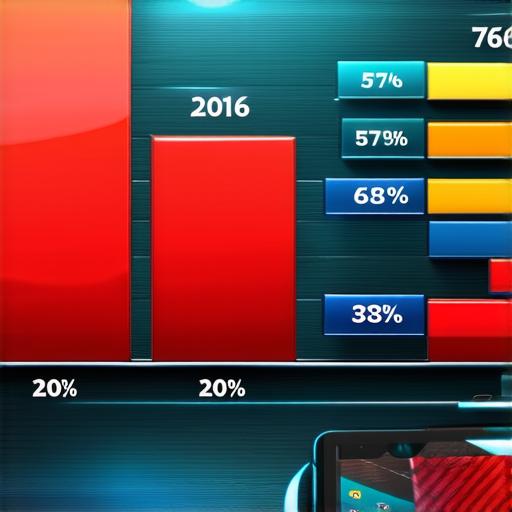In 2016, mobile games accounted for an astounding 50% of the global video game revenue. This statistic is a clear indication of the massive impact that mobile gaming has had on the industry as a whole.
Firstly, let’s take a closer look at how mobile games have grown in popularity over the years.
In the early days of mobile gaming, the market was relatively small and niche. However, with the advent of smartphones and other mobile devices, the potential for mobile gaming has exploded.
Today, millions of people around the world are playing mobile games on their phones, tablets, and other devices, and this trend is only expected to continue in the years to come.
One of the key factors driving the growth of mobile gaming is the increasing availability and affordability of mobile devices. With smartphones and tablets becoming more accessible to people all over the world, it’s no wonder that mobile gaming has become so popular.

In addition, advances in technology have made it possible to create games that are not only visually stunning but also incredibly immersive and engaging. This has helped to attract a wider audience to the mobile gaming market and has fueled its rapid growth.
Another factor contributing to the success of mobile games is the rise of social media. Social media platforms like Facebook, Twitter, and Instagram have made it easy for people to share their gaming experiences with friends and family, helping to drive word-of-mouth advertising and increase the visibility of mobile games.
In terms of revenue, mobile games have proven to be incredibly lucrative for developers. One of the main reasons for this is the use of in-app purchases. In-app purchases are a way for players to buy additional content or features within a game, and they have become an increasingly popular way for developers to monetize their games.
In addition to in-app purchases, mobile games can also generate revenue through advertising and sponsorships.
Despite the success of mobile games, there are still some challenges that game developers face when it comes to creating mobile games. One of the main challenges is the need to create games that are optimized for a wide range of devices and screen sizes.
This requires developers to be flexible and adaptable in their approach to game design, as they need to ensure that their games work seamlessly on everything from smartphones to high-end tablets.
Another challenge facing mobile game developers is the intense competition in the market. With millions of games available for download on app stores around the world, it can be incredibly difficult for a new game to gain traction and attract players.
In order to succeed, developers need to create games that stand out from the crowd and offer something unique and valuable to players.
Despite these challenges, the future of mobile gaming looks incredibly bright. With the continued growth of mobile devices and the increasing popularity of social media, it’s clear that mobile gaming will continue to be a major force in the video game industry.
In addition, advances in technology are likely to bring even more immersive and engaging games to players in the years to come.
In conclusion, the fact that mobile games accounted for 50% of the global video game revenue in 2016 is a clear indication of the massive impact that mobile gaming has had on the industry as a whole.
